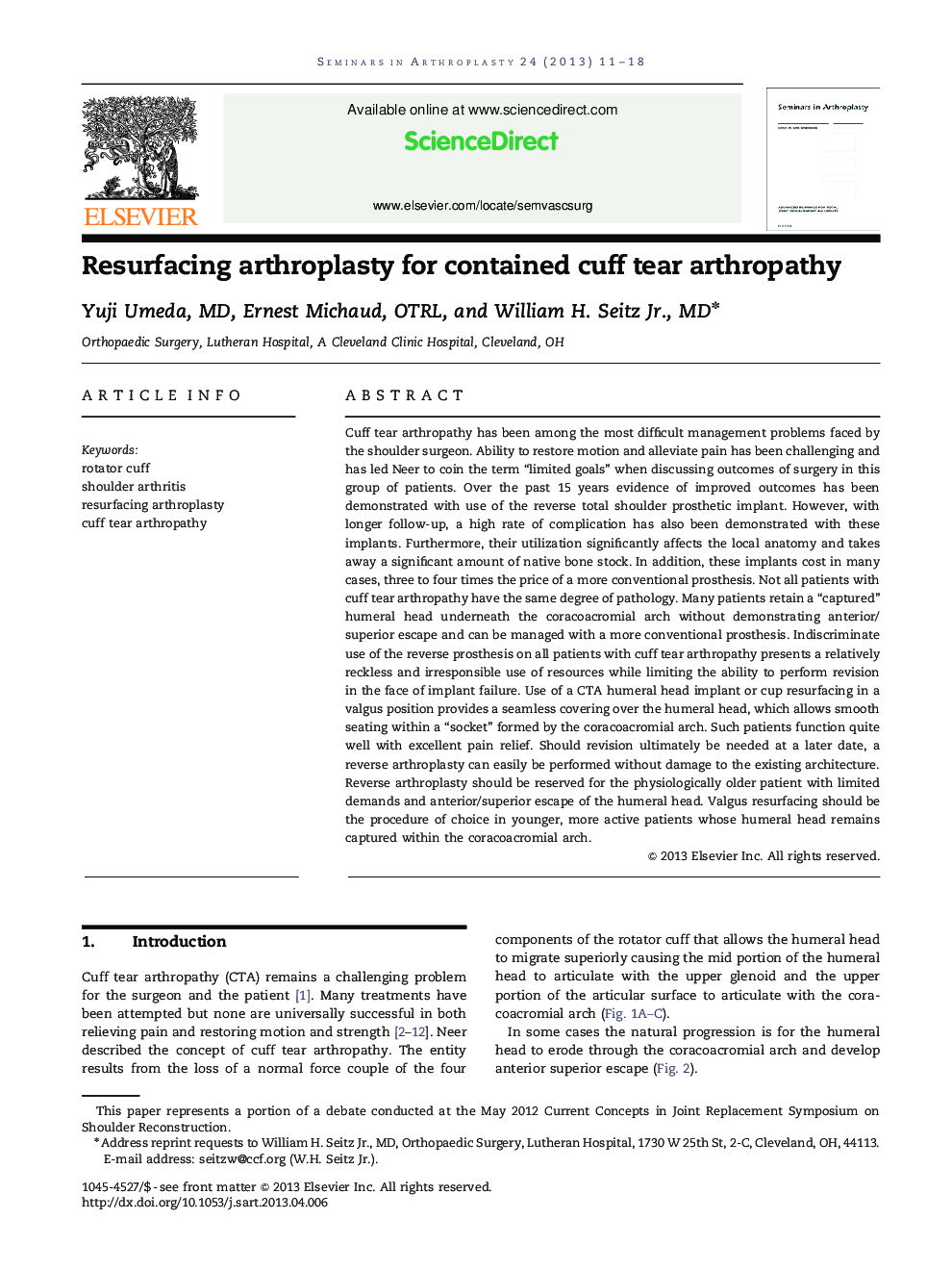| Article ID | Journal | Published Year | Pages | File Type |
|---|---|---|---|---|
| 4094061 | Seminars in Arthroplasty | 2013 | 8 Pages |
Cuff tear arthropathy has been among the most difficult management problems faced by the shoulder surgeon. Ability to restore motion and alleviate pain has been challenging and has led Neer to coin the term “limited goals” when discussing outcomes of surgery in this group of patients. Over the past 15 years evidence of improved outcomes has been demonstrated with use of the reverse total shoulder prosthetic implant. However, with longer follow-up, a high rate of complication has also been demonstrated with these implants. Furthermore, their utilization significantly affects the local anatomy and takes away a significant amount of native bone stock. In addition, these implants cost in many cases, three to four times the price of a more conventional prosthesis. Not all patients with cuff tear arthropathy have the same degree of pathology. Many patients retain a “captured” humeral head underneath the coracoacromial arch without demonstrating anterior/superior escape and can be managed with a more conventional prosthesis. Indiscriminate use of the reverse prosthesis on all patients with cuff tear arthropathy presents a relatively reckless and irresponsible use of resources while limiting the ability to perform revision in the face of implant failure. Use of a CTA humeral head implant or cup resurfacing in a valgus position provides a seamless covering over the humeral head, which allows smooth seating within a “socket” formed by the coracoacromial arch. Such patients function quite well with excellent pain relief. Should revision ultimately be needed at a later date, a reverse arthroplasty can easily be performed without damage to the existing architecture. Reverse arthroplasty should be reserved for the physiologically older patient with limited demands and anterior/superior escape of the humeral head. Valgus resurfacing should be the procedure of choice in younger, more active patients whose humeral head remains captured within the coracoacromial arch.
